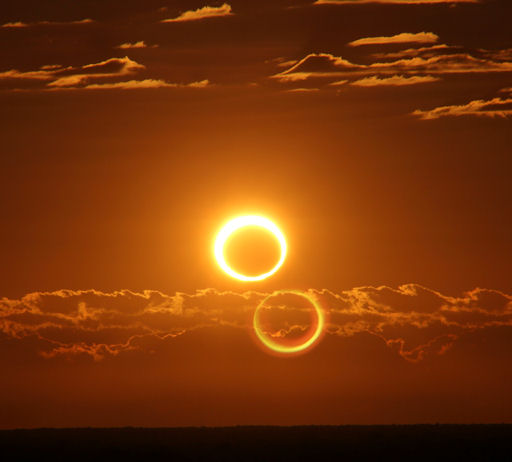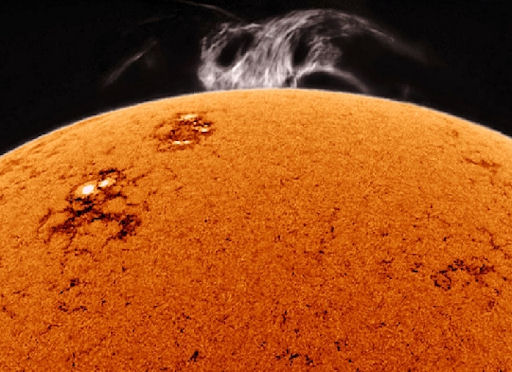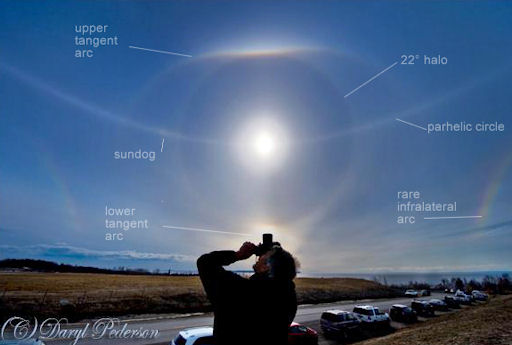Listen to radar echoes from satellites and meteors, live on listener-supported Space Weather Radio. | | |
M-CLASS SOLAR FLARE: A sunspot located just behind the sun's northeastern limb erupted during the early hours of May 10th, producing an M3-class solar flare. NASA's Solar Dynamics Observatory recorded the explosion's extreme ultraviolet flash: movie. The farside active region will turn toward Earth in the days ahead, so stay tuned. Solar flare alerts: text, voice.
"RING OF FIRE" SOLAR ECLIPSE: As the sun rose over Australia on Friday morning, May 10th, the solar disk turned into a ring of fire. The day began with an annular solar eclipse:

Nicole Hollenbeck took the picture from inside the narrow path of annularity about 70km south of Newman, Australia. At the time, more than 95% of the sun's diameter was covered by the Moon.
In an annular eclipse the Moon is not quite big enough to cover the entire solar disk. A blinding ring of solar fire juts out around the Moon, overwhelming the sun's delicate corona. It may not be the same as totality, but annularity has a charm and beauty all its own. Browse the gallery for more images from the eclipse zone.
Realtime Solar Eclipse Photo Gallery
SPECTACULAR PROMINENCE, GONE: For the past few days, astronomers around the world have been monitoring a bushy filament of magnetism dancing along the sun's western limb. Sergio Castillo of Inglewood CA photographed the structure on May 9th just before it collapsed:

"OMG! This giant prominence was one of the most spectacular I have ever witnessed," says Castillo. "Yesterday, however, it collapsed on its own magnetic field and nothing remains of it."
The filament has disappeared from the sun, but all 250,000 km of it may still be found in the space weather photo gallery. Start looking.
Realtime Space Weather Photo Gallery
ICE HALO AROUND THE SUN: On May 6th, Daryl Pederson went to Point Woronzof in Anchorage, Alaska, to see the USS Anchorage depart. "But," says Pederson, "the sun refused to be outshone." Instead of photographing the amphibious warship, he recorded this complex ice halo in the sky overhead:

The luminous arcs and rings around the sun are caused by sunlight shining through ice crystals in thin, high clouds. Usually only one or two of these ice halos appears at once, but Pederson caught at least 6 different varieties, identified and labeled above by atmospheric optics expert Les Cowley.
"It is sometimes hard to believe that tiny ice crystals floating in the air or clouds can make such precise and beautiful sky geometry," comments Cowley. "Two reasons:- One, the small crystals unlike their larger and more familiar snowflake cousins are near optically perfect. Two, they are set firmly in near perfect alignments by aerodynamic drag forces as they drift slowly down relative to local air currents. Only the circular 22o halo comes from tumbling crystals and they generate geometric perfection, too!"
More optical perfection may be found in the space weather photo gallery.
Realtime Space Weather Photo Gallery
Realtime Aurora Photo Gallery
Realtime Comet Photo Gallery
Realtime Noctilucent Cloud Photo Gallery
[previous years: 2003, 2004, 2005, 2006, 2007, 2008, 2009, 2011]

